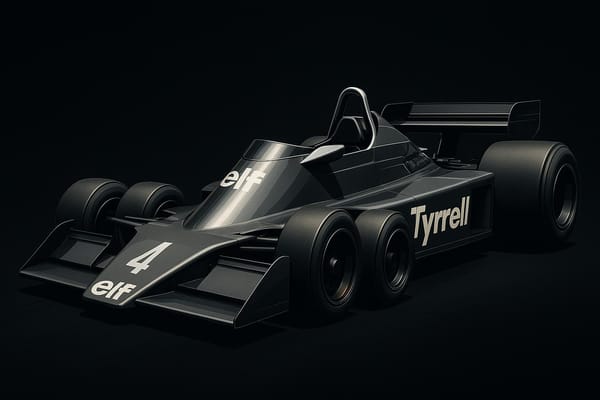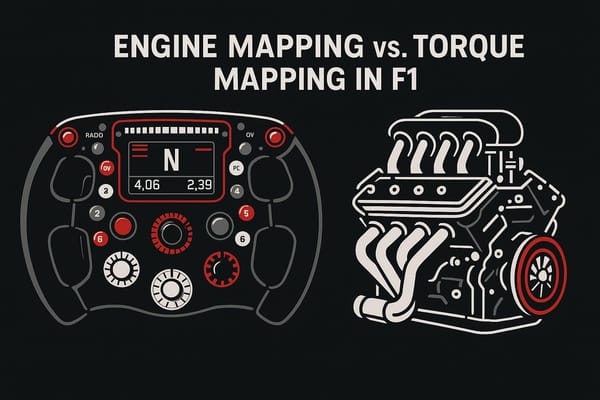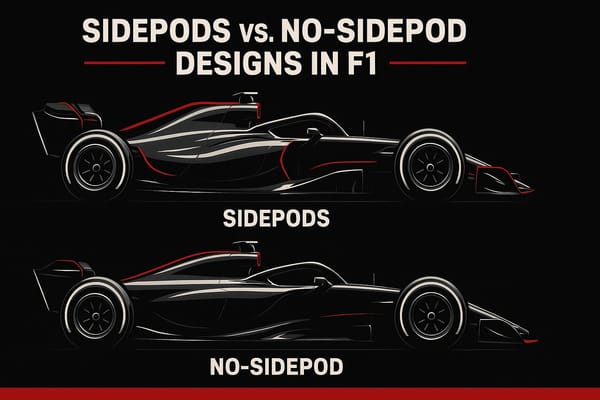2025 F1 Cars: Comparing Pre-Season to Final Race
Explore the evolution of F1 cars throughout the 2025 season, highlighting team strategies, performance upgrades, and regulatory impacts.
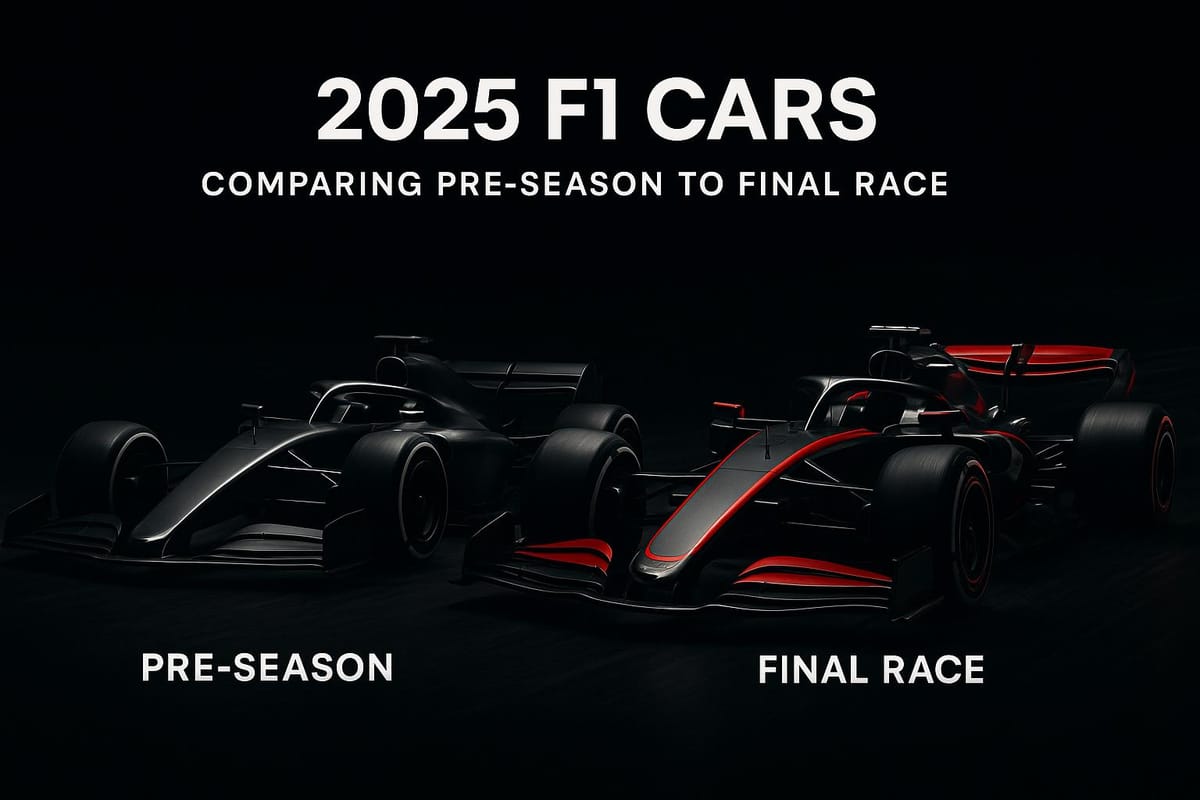
The 2025 Formula One season showcased how teams transformed their cars from pre-season testing to the final race by adapting to new rules and continuous upgrades. Key takeaways include:
- New Rules: Adjusted DRS zones, stricter weight limits, and mandatory rookie driver participation shaped early car designs.
- Early Strategies: Teams focused on either aerodynamics or mechanical grip to align with the regulations.
- Mid-Season Changes: Aerodynamic refinements, power unit upgrades, and hybrid system tweaks improved performance.
- Top Teams' Approaches:
Quick Comparison
| Team | Focus Area | Key Upgrade | Impact |
|---|---|---|---|
| Red Bull Racing | Aerodynamics | Floor refinements | Maintained early-season dominance |
| Ferrari | Power Unit | Improved speed and fuel efficiency | Closed gap to leaders |
| Mercedes-AMG | Suspension | Active-flow system for airflow control | Excelled on high-downforce tracks |
| McLaren | Cooling System | Enhanced reliability and performance | Improved long-stint performance |
The season highlighted how incremental improvements and strategic upgrades can significantly impact performance, shaping the competition and the future of F1 technology.
The First In-Depth Look At The 2025 Cars | F1TV Tech Talk | Crypto.com
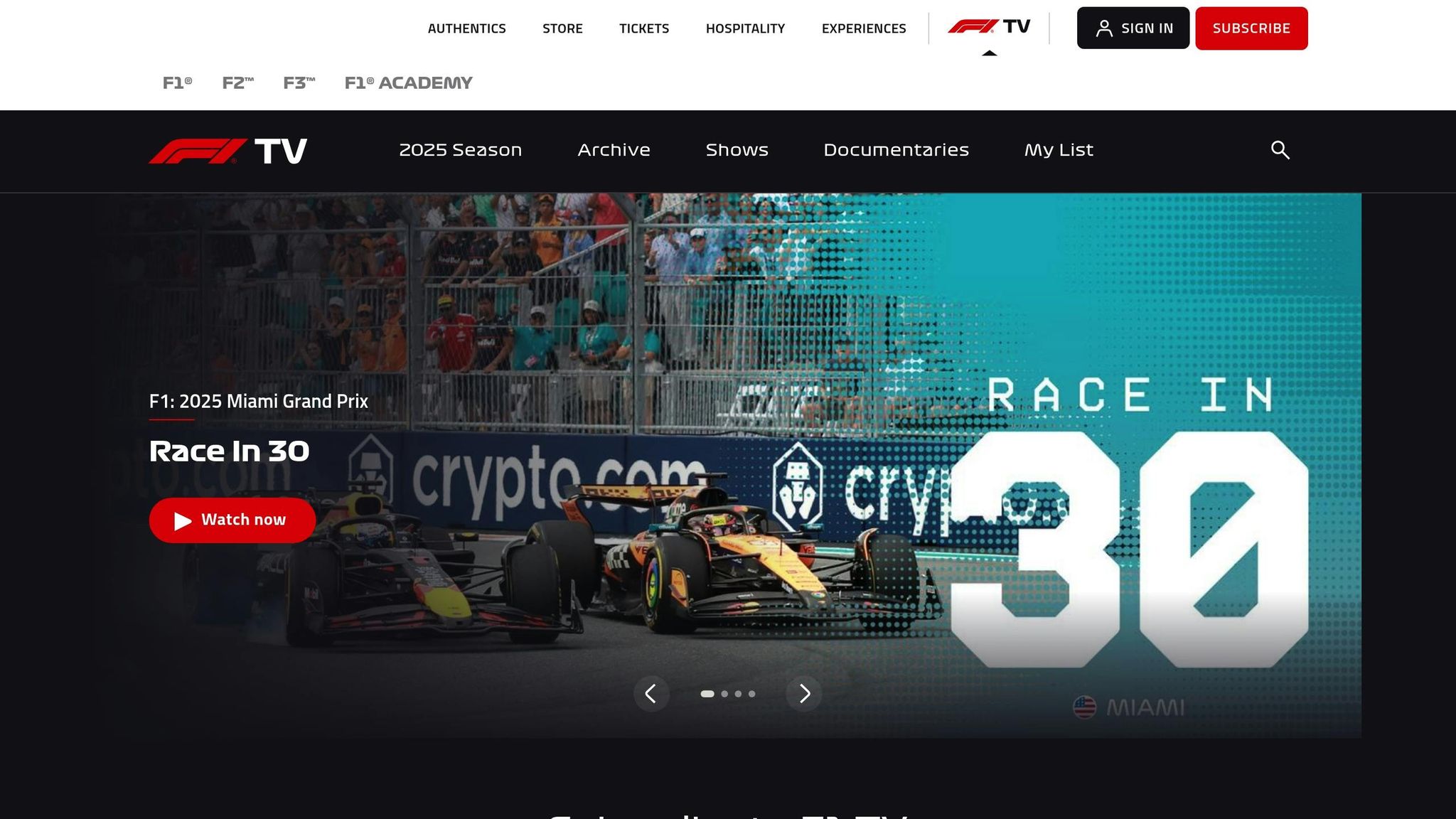
2025 F1 Rules and Technical Requirements
The FIA introduced updated 2025 regulations focusing on aerodynamics, reduced environmental impact, and creating a more level playing field. These changes included adjustments to DRS zones, weight limits, and a new rule requiring rookie driver participation.
Key Changes for 2025
The updated DRS zones were designed to encourage more overtaking without relying heavily on artificial aids. Adjustments to weight limits pushed teams to find a balance between aerodynamics and structural design. Additionally, the rookie participation rule required teams to include first-year drivers in practice sessions, influencing how teams approached early-season development.
Initial Car Design Strategies
Teams responded to the new rules by taking two main approaches: some prioritized aerodynamic setups to align with the revised DRS zones, while others focused on rebalancing weight and enhancing mechanical grip. These choices directly influenced each team's development strategy, laying the groundwork for further changes as the season progressed.
These early decisions played a crucial role in shaping the season's technical advancements.
Pre-Season Car Specifications
Pre-season testing highlighted differences in how teams approached their car designs. These findings played a key role in shaping technical strategies.
Initial Technical Setup
Teams experimented with different combinations of power units and aerodynamic features. Many focused on improving airflow and tackling cooling issues, uncovering both strengths and areas for improvement in their designs. These initial setups provided a baseline for adjustments during testing.
Team Approaches After Testing
Testing revealed a range of strategies in areas like power units, aerodynamics, and tire management. Teams fine-tuned their tire strategies to ensure stable performance, laying the groundwork for mid-season upgrades. These early decisions shaped how teams planned to navigate the new regulations as the season progressed.
Car Updates Throughout 2025
In 2025, teams focused on specific upgrades, improving aerodynamics, refining power units, and tweaking hybrid systems. These changes were guided by early race data and evolving regulations.
Key Updates by Mid-Season
Midway through the season, teams concentrated on refining aerodynamics and power units. The goal was to address early performance gaps and adjust to changing track conditions.
Teams' Responses to Rules
Teams approached the 2025 technical requirements with different strategies. Some prioritized aerodynamic adjustments, while others focused on optimizing power units and hybrid systems. Rather than making sweeping changes, teams relied on smaller, consistent updates to improve car performance. This steady approach allowed for noticeable improvements from pre-season designs to the final race setups.
Pre-Season vs Final Specs
The transition from pre-season designs to final race configurations showcased gradual but effective improvements. Teams worked on aerodynamics, engine output, energy recovery, and cooling systems. These step-by-step enhancements led to clear performance gains on the track by the season's end.
Results of Car Development
The 2025 F1 season revealed how teams transformed pre-season testing insights and mid-season tweaks into measurable performance gains.
Performance Data Analysis
The 2025 performance metrics highlighted clear technical progress across the grid. Qualifying sessions showed tighter pace differences as teams fine-tuned their designs. Aerodynamic improvements played a major role, delivering measurable speed gains and setting the foundation for how teams pursued their specific development strategies.
Top Teams' Development Paths
The top teams took different approaches to stay competitive and secure their championship standings:
- Red Bull Racing: Focused on steady aerodynamic floor refinements, which helped them maintain an early-season edge.
- Ferrari: Introduced a mid-season power unit upgrade that improved both speed and fuel efficiency, allowing them to close the gap to the leaders.
- Mercedes-AMG: Developed an active-flow suspension system that dynamically adjusted airflow with speed, excelling on high-downforce tracks.
- McLaren: Upgraded their cooling system, enabling their power units to deliver peak performance over longer stints without reliability issues.
These tailored strategies reshaped the competitive landscape, with each team's innovations contributing to noticeable performance improvements on the track.
Conclusion: 2025 Season Review
Technical Insights
The 2025 season brought noticeable changes in how teams approached performance. From pre-season testing to the final race, teams introduced new technologies and fine-tuned their strategies to meet the strict technical guidelines. These adjustments proved that constant improvements can deliver real results on the track.
Influence on F1's Future
This season highlighted the ongoing challenge of balancing cutting-edge advancements with regulatory limits. As teams explore new possibilities in aerodynamics, power unit efficiency, and chassis development, these efforts are likely to influence future rule changes. The progress made in 2025 will play a key role in shaping the sport's technical direction and keeping the competition exciting for years to come.
FAQs
How did the 2025 F1 regulations, like updated DRS zones and stricter weight limits, influence car performance and team strategies during the season?
The 2025 F1 regulations brought significant changes that shaped team strategies and car performance throughout the season. Adjusted DRS zones affected overtaking opportunities, requiring teams to rethink race strategies and optimize setups for different tracks. Meanwhile, stricter weight limits pushed engineers to innovate with lighter materials and more efficient designs, balancing performance with reliability.
These changes created a dynamic development race between teams, with noticeable differences in car performance from the season opener to the final race. Teams that adapted quickly to the new rules gained an early advantage, while others refined their approaches over time to close the gap. Overall, the regulations encouraged closer competition and highlighted the importance of adaptability in F1.
What mid-season upgrades did Red Bull, Ferrari, Mercedes, and McLaren introduce in 2025, and how did these changes impact their performance by the final race?
Mid-season upgrades are a critical part of every F1 team's strategy, and in 2025, teams like Red Bull, Ferrari, Mercedes, and McLaren made significant changes to stay competitive. These updates typically focused on aerodynamics, chassis adjustments, and power unit optimizations, tailored to address weaknesses identified during the early races.
For instance, Red Bull introduced a more efficient rear wing design to enhance straight-line speed, while Ferrari focused on improving tire management through suspension tweaks. Mercedes implemented updates to their floor design for better downforce, and McLaren refined their cooling systems to improve reliability. These changes collectively helped teams close performance gaps, secure podium finishes, and adapt to evolving race conditions, ensuring they remained competitive by the season's end.
How did the mandatory rookie driver rule impact team strategies and performance during the 2025 F1 season?
The mandatory rookie driver participation rule introduced in the 2025 F1 season had a notable impact on team strategies and performance. Early in the season, teams had to balance giving rookies valuable track time while maintaining their development pace. This often meant adjusting testing schedules or dedicating specific practice sessions to ensure compliance without compromising overall performance.
For some teams, integrating rookies brought fresh perspectives and driving styles that influenced car setup and development decisions. However, others faced challenges in optimizing race strategies while managing the learning curve of less experienced drivers. Ultimately, the rule added an intriguing layer of complexity to the season, showcasing how adaptable teams could be under evolving regulations.


